Abstract
STUDY OBJECTIVE: This study was conducted as part of the MRC cognitive function and ageing study. It aimed to estimate the lifetime prevalence of self reported physical illnesses and other health related events, and the prevalence of limiting disability in people over 65 in six areas of England and Wales. DESIGN: Screening phase of a two stage prevalence study. SETTING: Geographically delimited areas in four urban and two rural areas including institutions. PARTICIPANTS: Random population samples of people in their 65th year and above on the sample definition date, interviewed between 1989 and 1994. In Newcastle, Nottingham, and Oxford (urban) and in Cambridgeshire and Gwynedd(rural), the sample was stratified to provide equal numbers in the 65-74 and 75 years and over age groups. In Liverpool (urban), equal numbers in the five year age groups were taken. MAIN RESULTS: Age standardised prevalences were calculated for each geographical area, sex, and age group (65-74, 75+). Many conditions were more prevalent in the older age group including stroke, Parkinson's disease, arthritis, diabetes, and shingles but hypertension was more common in the younger age group. Conditions that were more prevalent in men included angina, heart attack, stroke, head injury, and peptic ulcers while hypertension, shingles, pernicious anaemia, and thyroid disease were more common in women. There was a complex pattern of area differences for individual conditions. Cambridgeshire had generally low prevalences for many diseases, including vascular problems, Gwynedd and Newcastle had less healthy elderly populations, and Nottingham and Newcastle had the highest percentages of housebound. CONCLUSIONS: This study provides the most robust available estimates for life-time prevalence of a variety of health conditions on a regional and national basis. It shows the greatly increased prevalence of disability in the very old population, particularly women.
Full text
PDF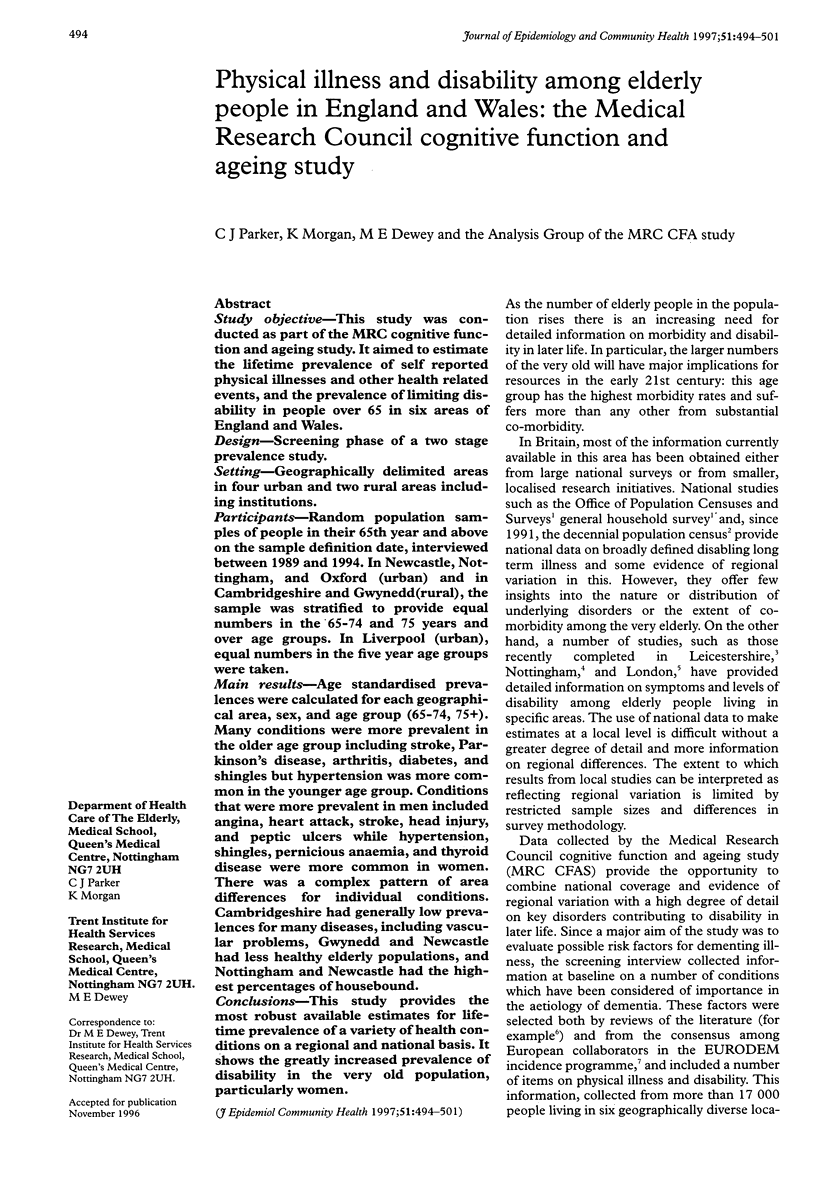
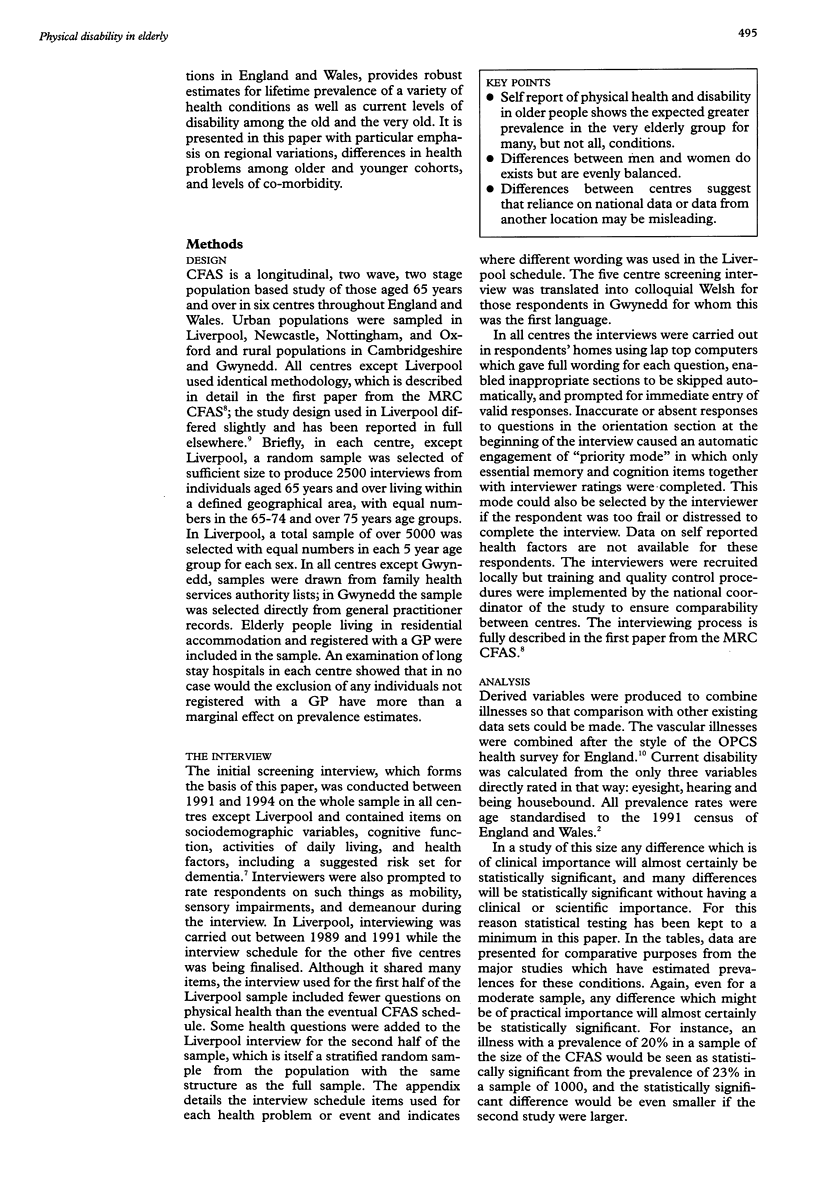
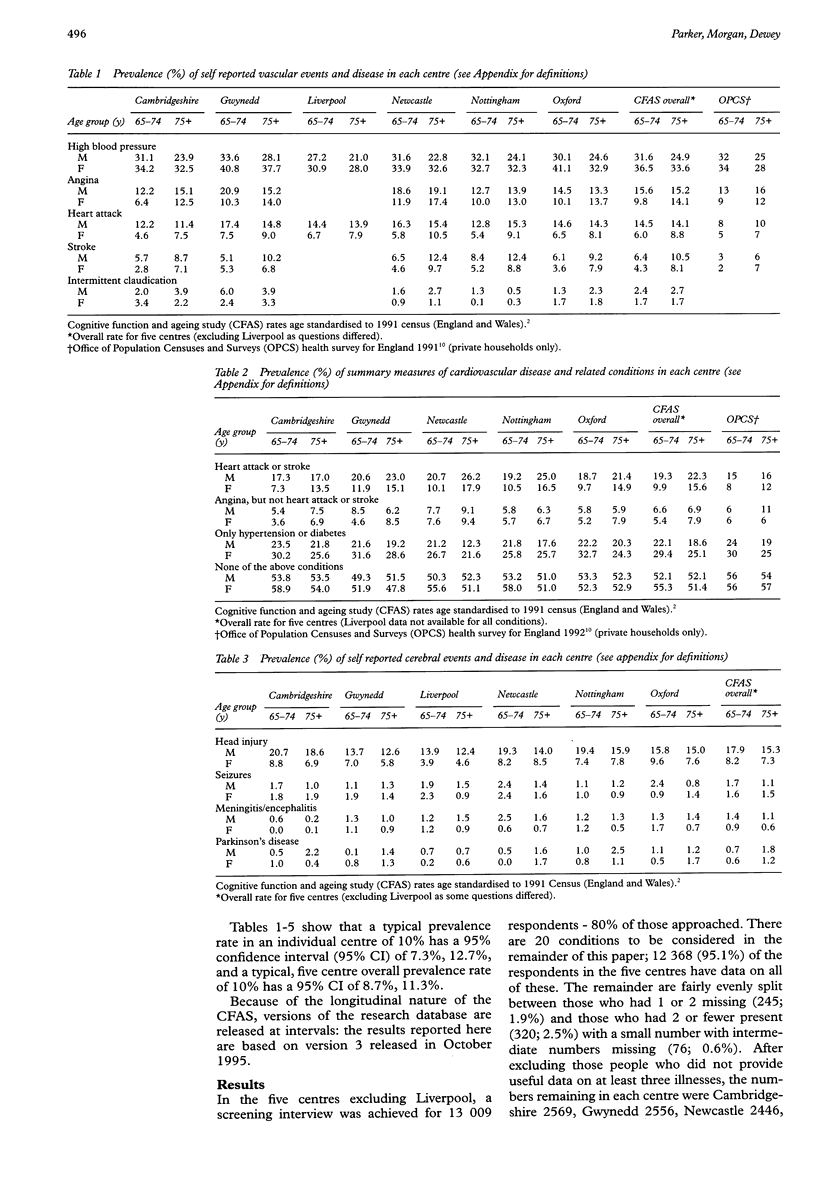
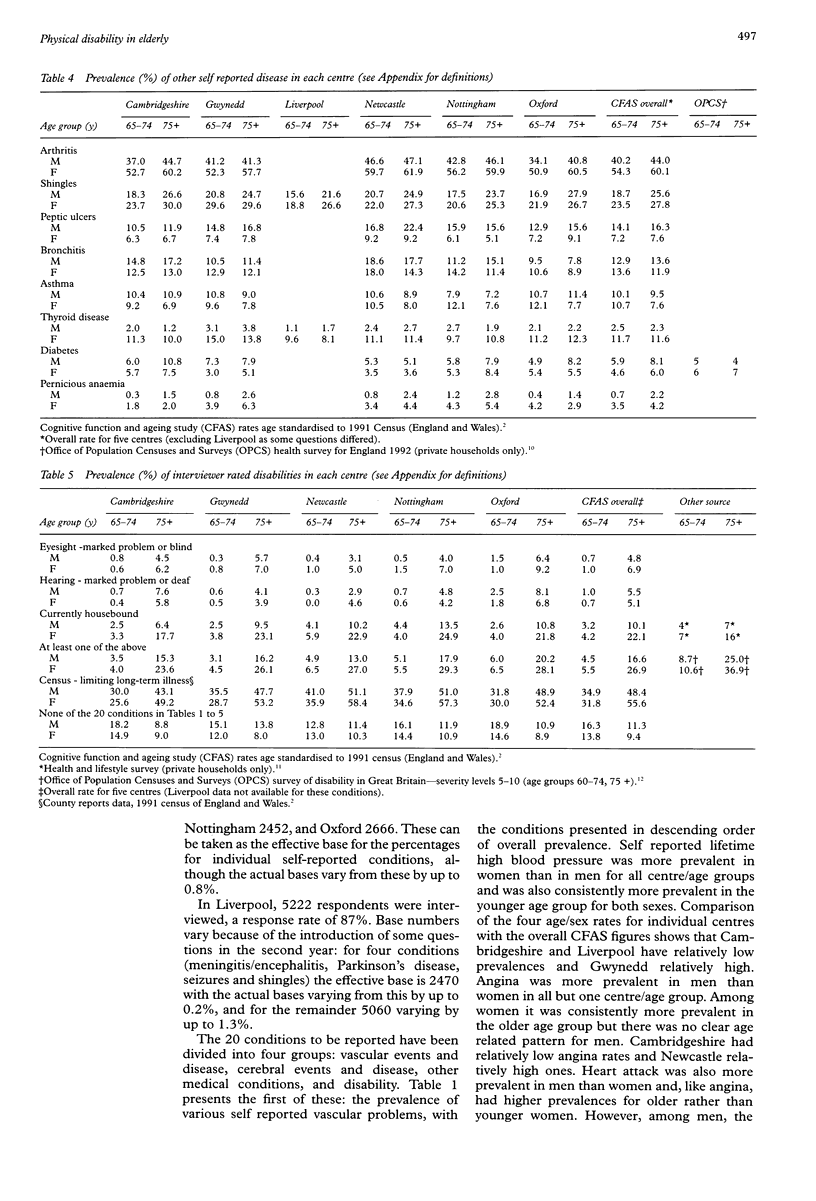
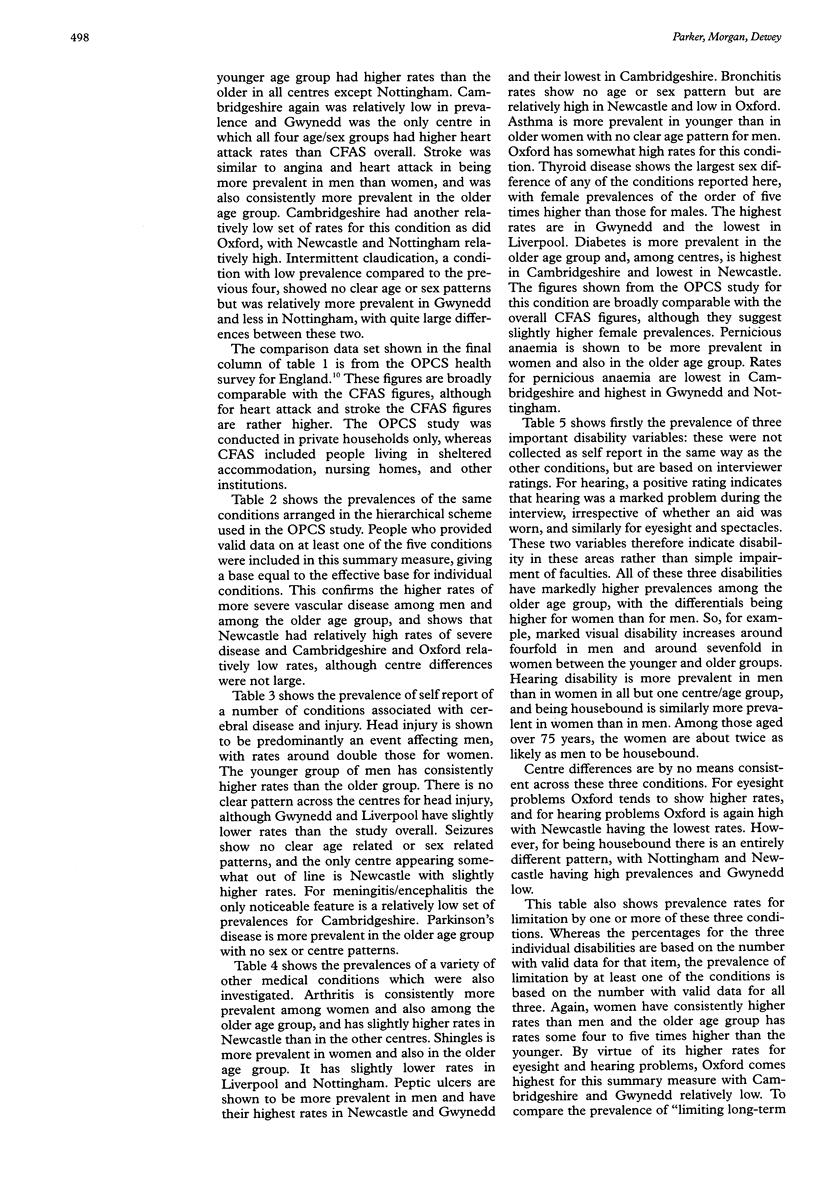
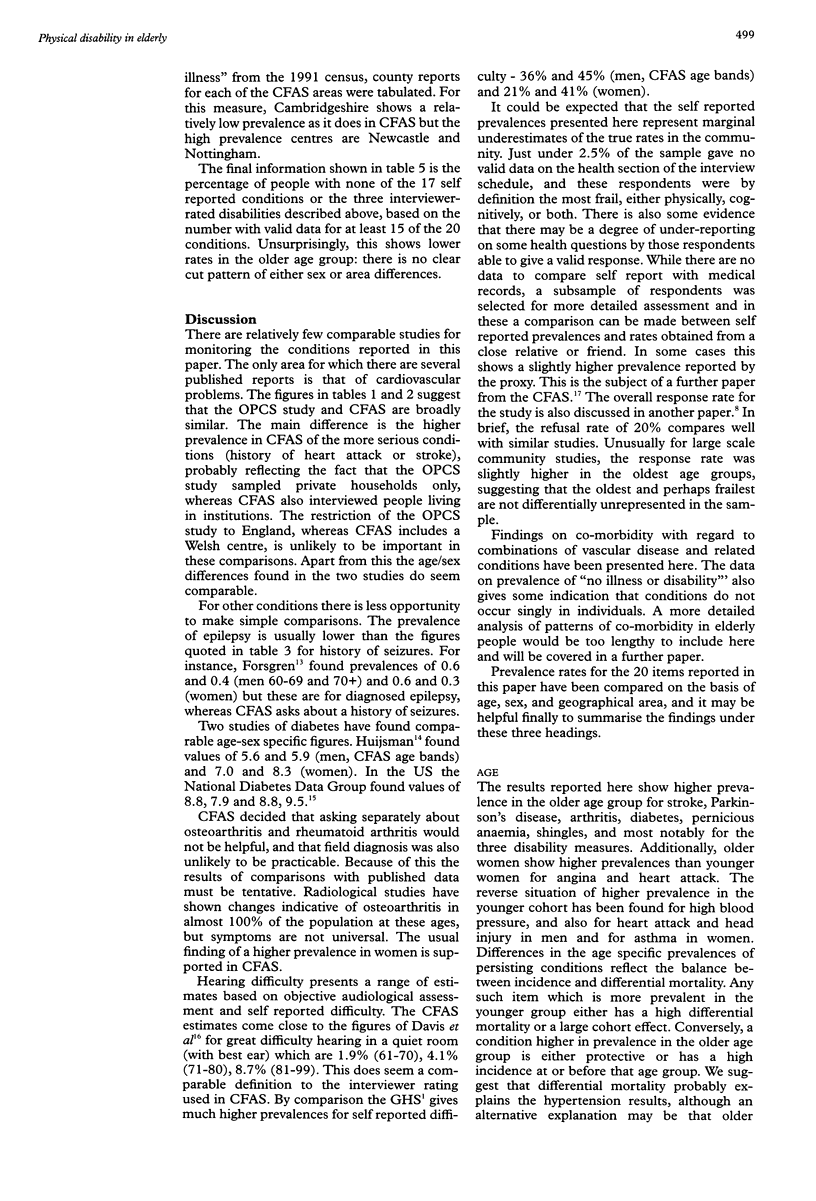
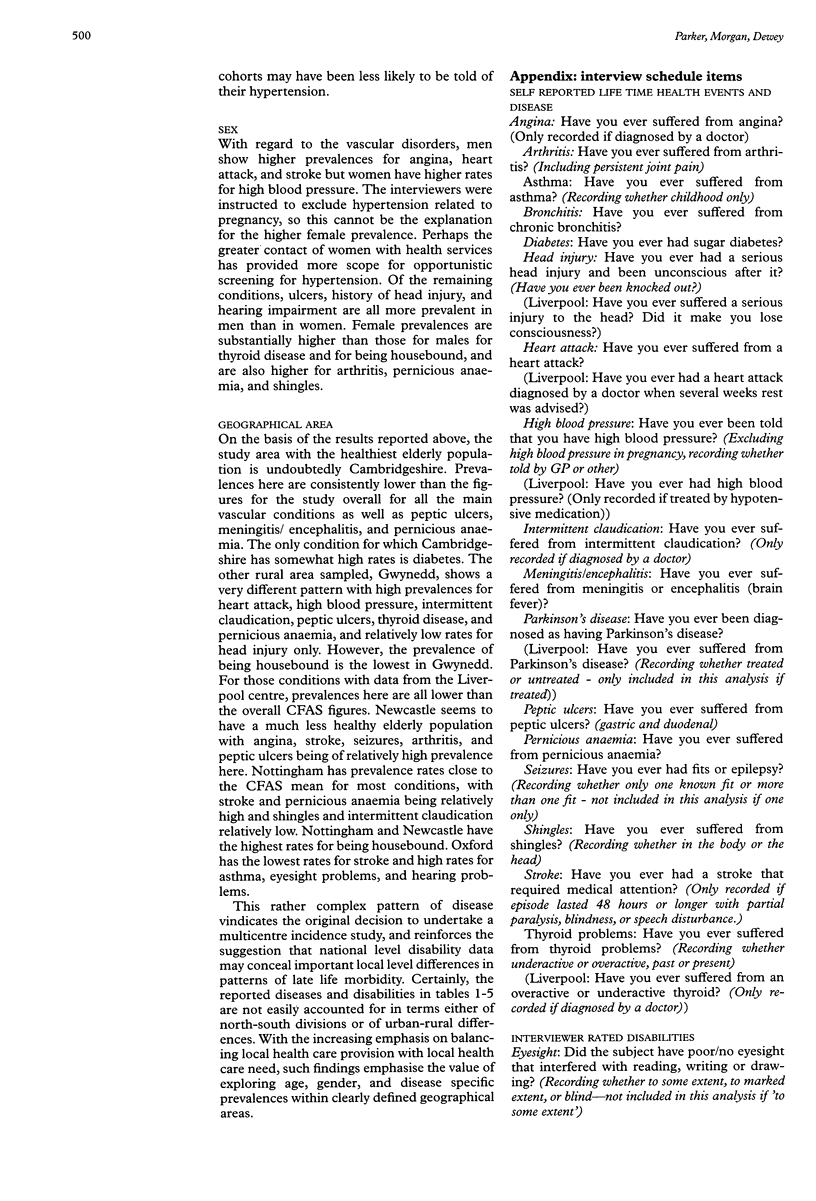
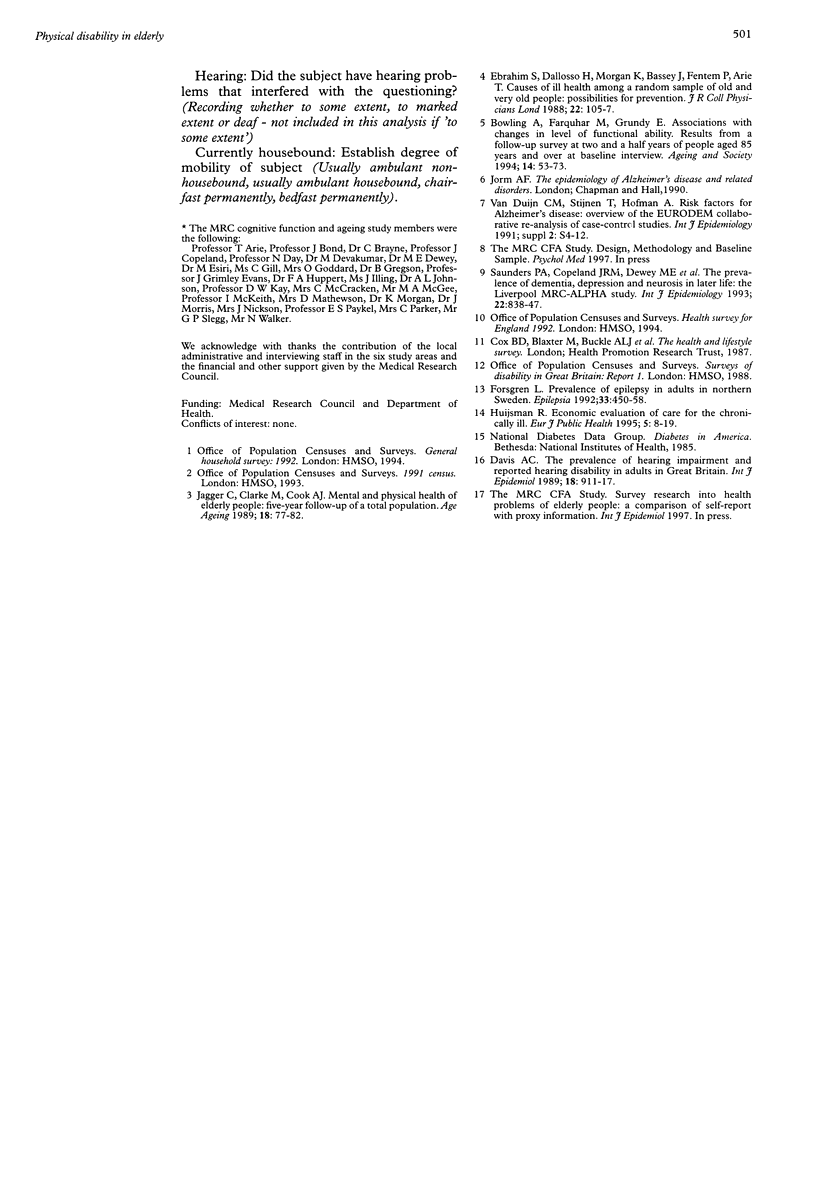
Selected References
These references are in PubMed. This may not be the complete list of references from this article.
- Davis A. C. The prevalence of hearing impairment and reported hearing disability among adults in Great Britain. Int J Epidemiol. 1989 Dec;18(4):911–917. doi: 10.1093/ije/18.4.911. [DOI] [PubMed] [Google Scholar]
- Ebrahim S., Dallosso H., Morgan K., Bassey J., Fentem P., Arie T. Causes of ill health among a random sample of old and very old people: possibilities for prevention. J R Coll Physicians Lond. 1988 Apr;22(2):105–107. [PMC free article] [PubMed] [Google Scholar]
- Forsgren L. Prevalence of epilepsy in adults in northern Sweden. Epilepsia. 1992 May-Jun;33(3):450–458. doi: 10.1111/j.1528-1157.1992.tb01690.x. [DOI] [PubMed] [Google Scholar]
- Jagger C., Clarke M., Cook A. J. Mental and physical health of elderly people: five-year follow-up of a total population. Age Ageing. 1989 Mar;18(2):77–82. doi: 10.1093/ageing/18.2.77. [DOI] [PubMed] [Google Scholar]
- Saunders P. A., Copeland J. R., Dewey M. E., Gilmore C., Larkin B. A., Phaterpekar H., Scott A. The prevalence of dementia, depression and neurosis in later life: the Liverpool MRC-ALPHA Study. Int J Epidemiol. 1993 Oct;22(5):838–847. doi: 10.1093/ije/22.5.838. [DOI] [PubMed] [Google Scholar]
- van Duijn C. M., Stijnen T., Hofman A. Risk factors for Alzheimer's disease: overview of the EURODEM collaborative re-analysis of case-control studies. EURODEM Risk Factors Research Group. Int J Epidemiol. 1991;20 (Suppl 2):S4–12. doi: 10.1093/ije/20.supplement_2.s4. [DOI] [PubMed] [Google Scholar]


